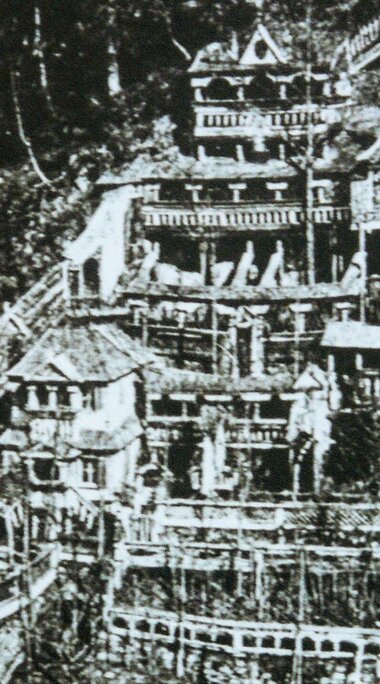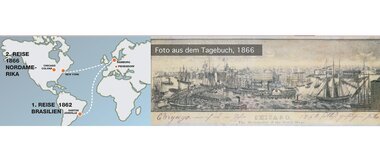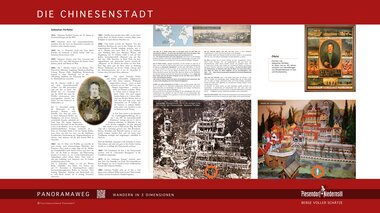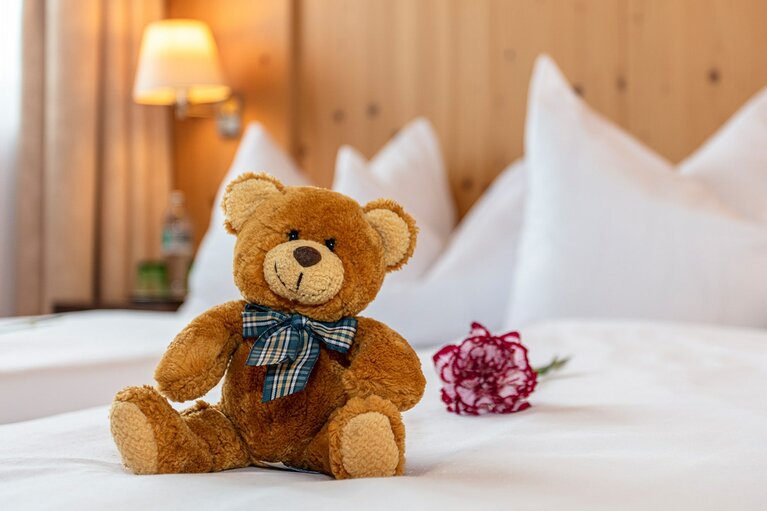The Chinatown
History of Sebastian Perfeller
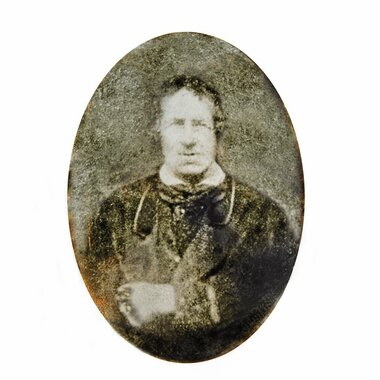
1814 - Sebastian Perfeller is born on 10th January in Eschenau/Pinzgau.
1827 - Sebastian learns the blacksmith trade, as his father cannot afford to send him to college due to financial reasons.
1829 - On 11th December, his father Jakob Perfeller purchases the blacksmith shop in Fürth, which Sebastian takes over in 1835.
1839 - Sebastian marries his wife Gertraud, and between 1841 and 1848, their children Anna, Johann, Jakob and Maria are born.
1862 - On 1st October he leaves his homeland. Through Traunstein, Munich, Augsburg, Nuremberg, Bamberg, Coburg, Weimar, Halle, Magdeburg, Braunschweig, he arrives in Hamburg, where he witnesses the 100th anniversary of the construction of St Michael's Church.
On 28th October, he boards the emigrant ship "Gellert" with 380 emigrants. On the evening of 14th December, after an interesting but strenuous sea journey, the ship docks at the port of San Francisco in southern Brazil.
On 17th December, he continues his journey to the German colony in Joinville. From there, he visits his friend Kohler from Hopfgarten, whose estate is located two and a half hours outside the city. The lush vegetation impresses him more than the rural life in the colony, where he is disappointed by the meager yields of agriculture. He stays with the Kohler family for about a quarter of a year, partly to recover from gastritis he contracted during the sea voyage, and partly to explore the unfamiliar world.
1863 - On 12th March, Perfeller leaves Joinville and after a seven-hour train journey, he reaches San Francisco. There, he has to wait a few days for the departure of the steamship to Santos and uses the time to explore the city. He arrives in Santos on Palm Sunday and immediately finds work with the master blacksmith Seidenthaler. There, he is well provided for and receives a good wage of 10 gulden per week.
On 5th September, he leaves the port of Santos on the Bremen bark "Mathilde" to set foot on European soil again in Hamburg-Altona on 15th November. He travels back to Fürth via Leipzig, Munich, Salzburg and Reichenhall, where he arrives in early December.
1865 - Perfeller converts the hut built in 1862, before the first big giant, in the Fürther Graben into a small cottage at Kohlplatz.
1866 - The desire to travel awakens again. Curious from the written reports of two friends who had emigrated to the north of the USA, he sets out on his second journey on 6th October. The overland journey to Hamburg leads through Munich, Weimar and Magdeburg.
On 16th October, he boards the large emigrant ship "Allemania" with over 1000 people. After a restless and stormy sea voyage, the "Allemania" reaches the port of New Yourk on 28th October. Five days later, the journey continues westward: Dunkirk on Lake Erie, Toledo, Chicago are the stops before he reaches Colona, the destination of his journey, on 20th November.
1867 - Hospitably received by his friends Pichler and Reiner and somewhat astonished by their relative prosperity - they had emigrated from Pinzgau with only 300 talers at the time - he tries to find work as a blacksmith. Neither in Colona or in Chicago does he have luck. It is only after a long search that he finds work in Colona, but only for three months with free board and lodging and a monthly salary of 50 gulden. Since he fared no better in other cities, he decided to return to his homeland.
In New York, he experienced the anniversary of the Declaration of Independence before boarding the emigrant ship "Hammonia" on 7th July 1867 and arriving in Hamburg on 21st July. In Munich, the last kreuzer is given out. Since no one helps him, he set out on foot. He is said to have been on the road for only five days: via Rosenheim, Kössen, Kitzbühel and Mittersill, he finally arrives exhausted and hungry in Fürth after only a few hours of rest and hardly any provisions.
Upon his return, he leased the blacksmith shop to his son Johann and withdrew completely to the Fürther Graben, where he began construction of the Chinatown.
1869 - The property on which he buildt Chinatown is registered in the land register as the "Chinese Rose Garden".
1879 - In the "Salzburger Zeitung," under the title "Der Einsiedler von Fürth. Ein Lebensbild aus dem Pinzgau," a portrait of Sebastian Perfeller appears, published by A. Posselt-Csorich.
1883 - Sebastian Perfeller dies on 15th July and is buried against his will not in Chinatown but in the cemetery in Piesendorf.
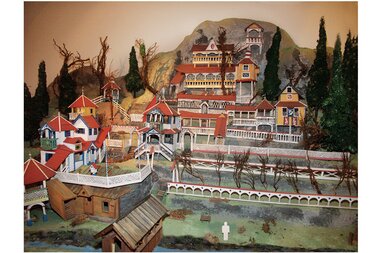
The property in the Fürther Graben, on which Perfeller gradually built the Chinatown over the course of 15 years and whose land register entry as "Chinese Rose Garden" dates back to 1869, is approx. 80 meters long and between 15 and 25 metres wide. The front of the Chinatown is about 40 meters long, with a lake being created on the rest of the property. The difference in height between the open space next to the bridge and the gable height of the top pavilion (presumably the observatory) is approx. 25 meters.
"Once you ascent, you can see the entire Pinzgau valley from east to west and in the south, the high, snow-covered icebergs".
The garden is terraced on the east side of the steam in a Chinese style, on a steep mountainside and against the rock wall.
>The path to this garden is lined on both sides with a maple tree avenue. A small, clear stream flows through the garden. A bridge in American style with a roof spans the stream.<
Unfortunately, the model (on the left picture) cannot be viewed at the moment!
The stream provided cooling in the summer, while the many newly planted larch, maple, cherry, chestnut, pear and rowan trees, as well as roses and elderberry bushes, were intended to provide shade serve as decorative elements. As A. Posselt-Csorich writes, Perfeller assigned specific functions and names to the individual pavilions and cottages:
>At the top, the alcove is titled Observatory, one floor below is the billard and conversation alcove, followed by the Gallery of Seven Beatitudes and the Journal Reading Gallery, still further down is the Natural-Historical-Geographical-Geological-Astronomical-Biographical Picture Gallery.<
But he also built a blacksmith's shop for himself (to the left behind the bridge). Countless paintings hung in the pavilions, arcades and cloisters, all by Jakob Mayer, the painter from Wald im Pinzgau and friend of Perfeller. Goethe and Schiller were depicted, as well as the American president Abraham Lincoln and the Emperor fo China.
Visitors of the time could admire painted landscape views of North America and cityscapes of New York on numerous metal plates, as well as numerous flower pictures, portraits and the 15 canvas panels painted with the 8 Beatitudes and the 7 Sacraments.
The four elements water, air, earth and light are brought together in their diverse manifestations to form a harmonious whole. Sebastian Perfeller also aimed to achieve nothing else with his experiment: to create a new world, designed according to his own ideas and ideals, within the existing world.
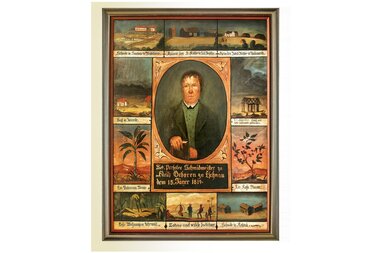
After Perfeller's death, the buildings, primarily constructed of softwood, gradually fell into decay. A fire in the late 1890s destroyed the remnants.
Image on the left: Oil painting - Portrait of Sebastian Perfeller at the age of approx. 60 years, surrounded by depictions to travel experiences in South and North America.
